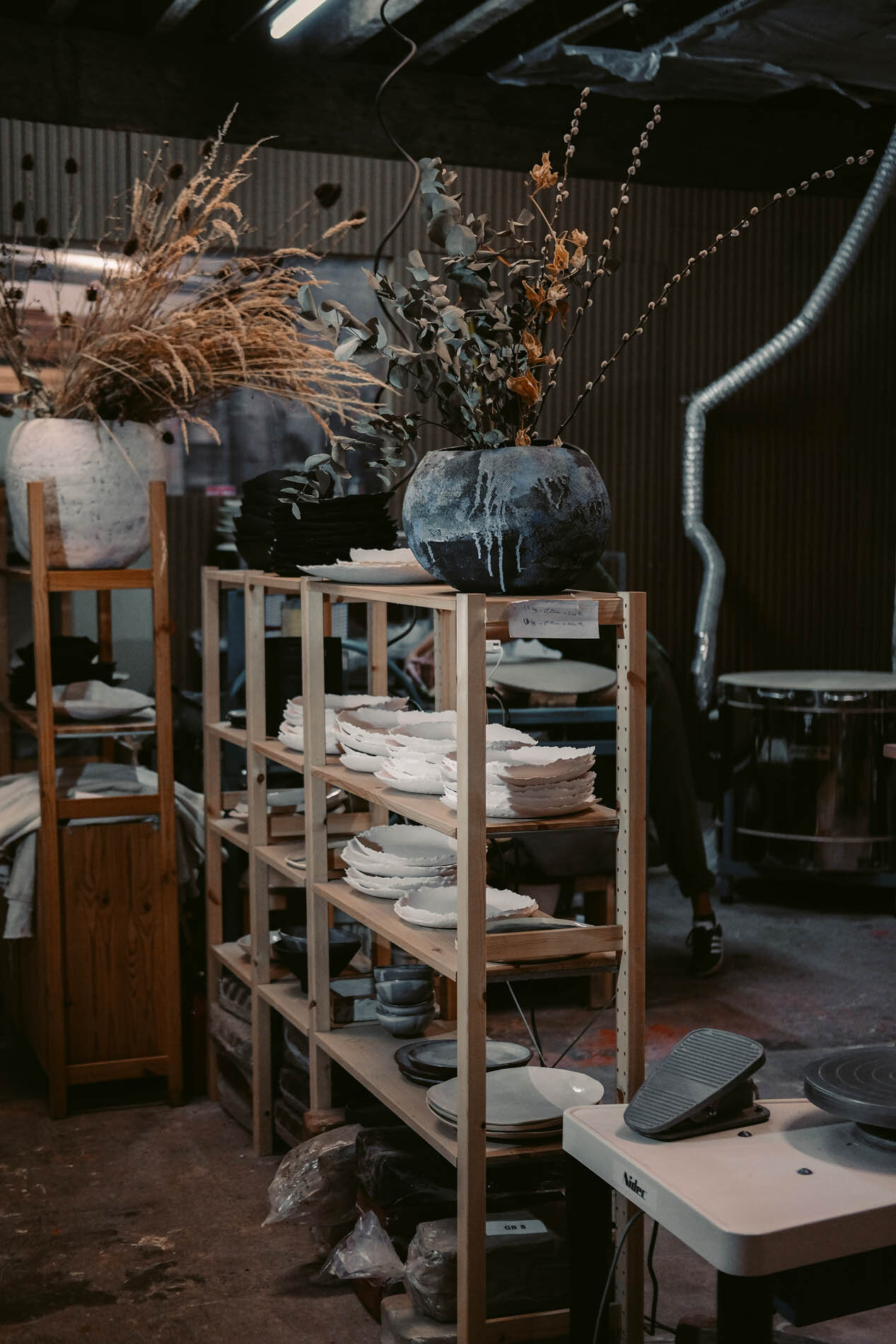
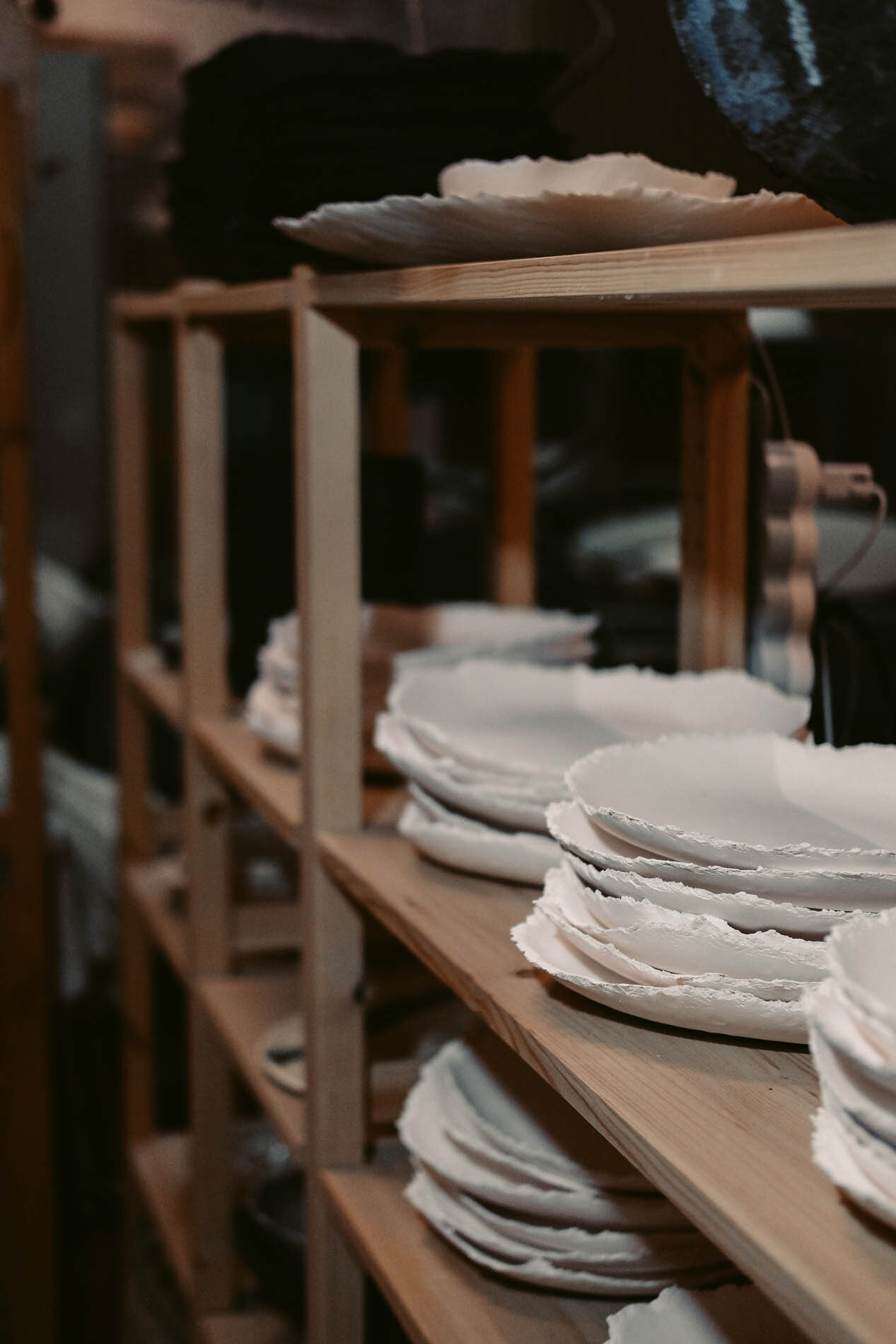
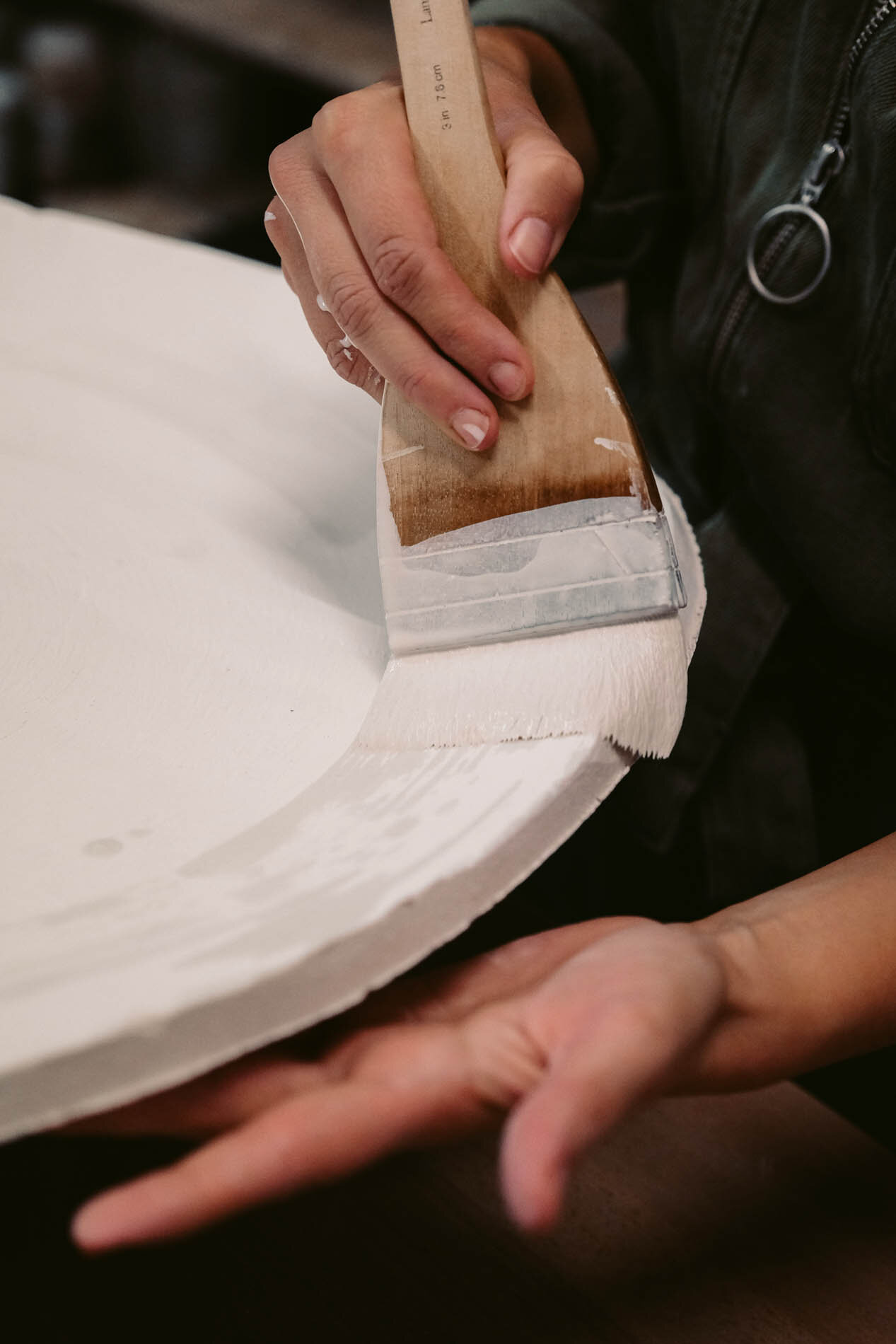
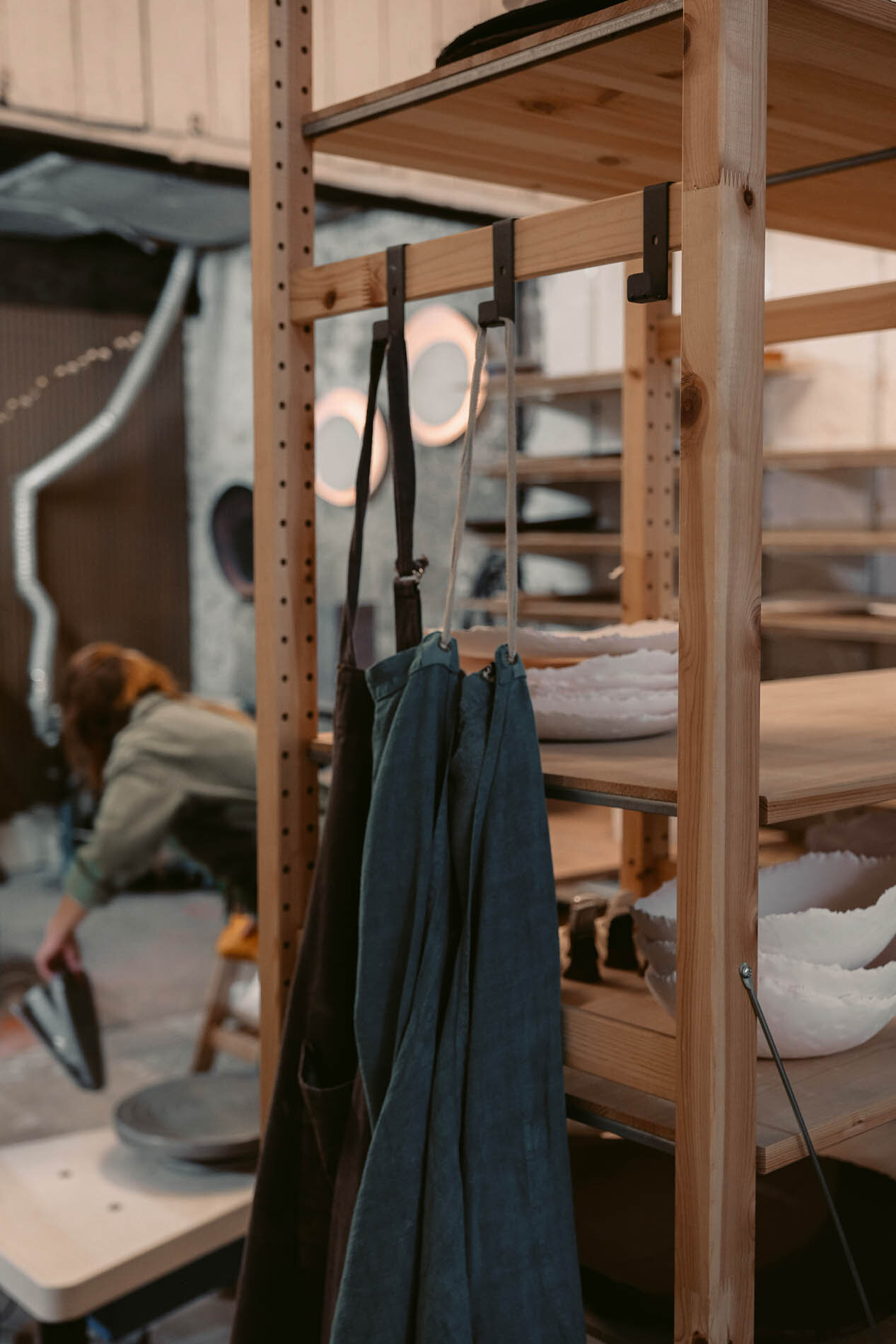
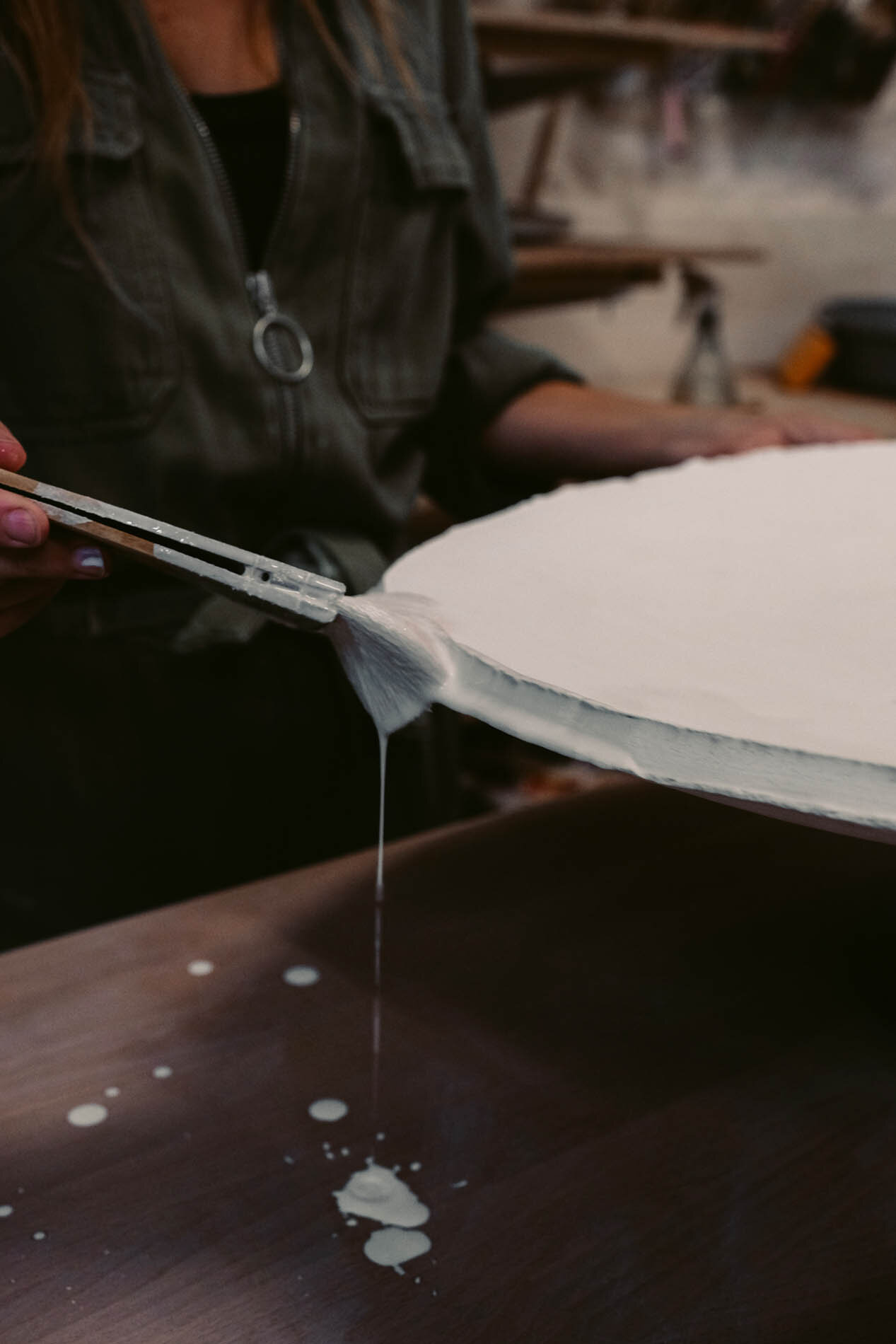
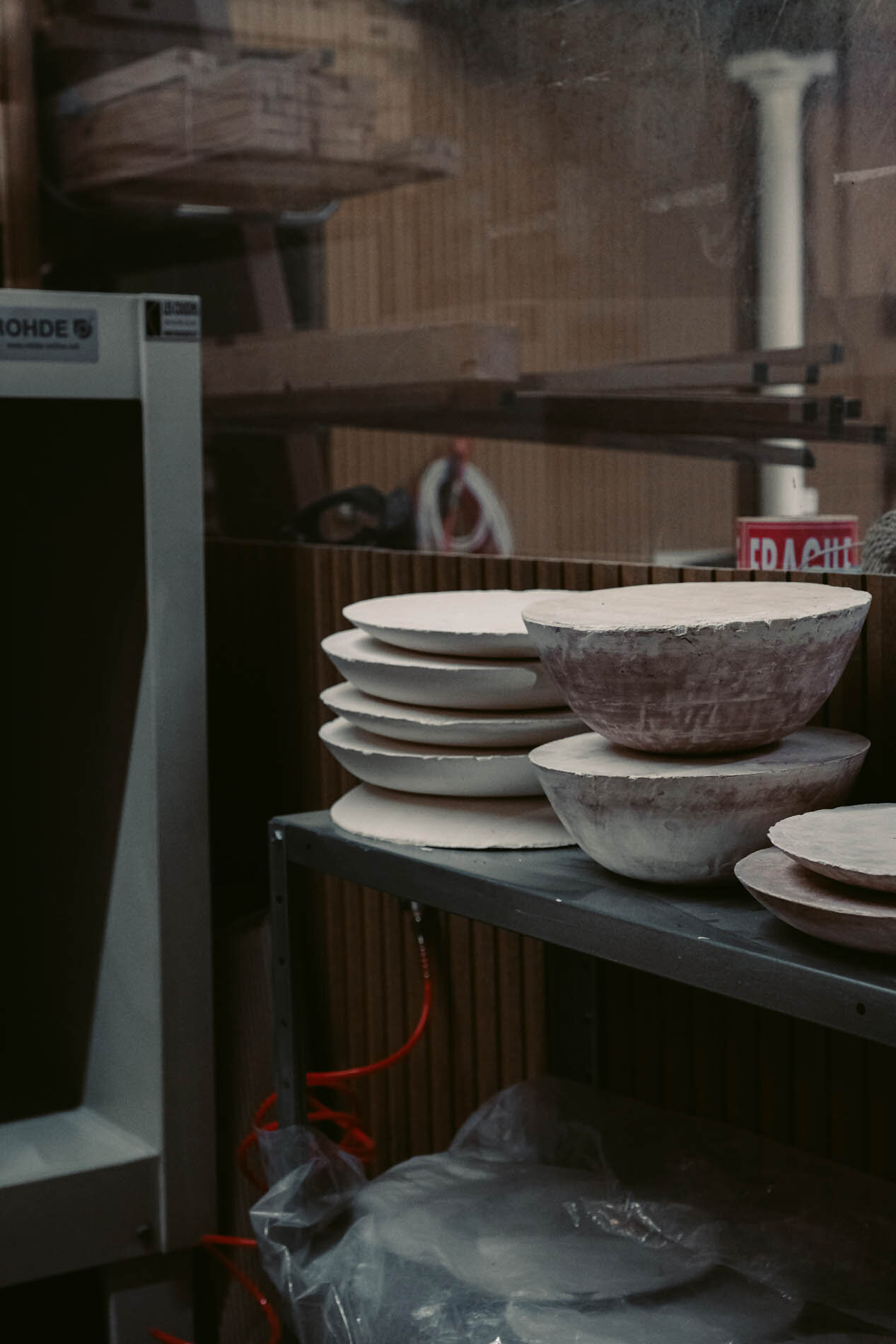
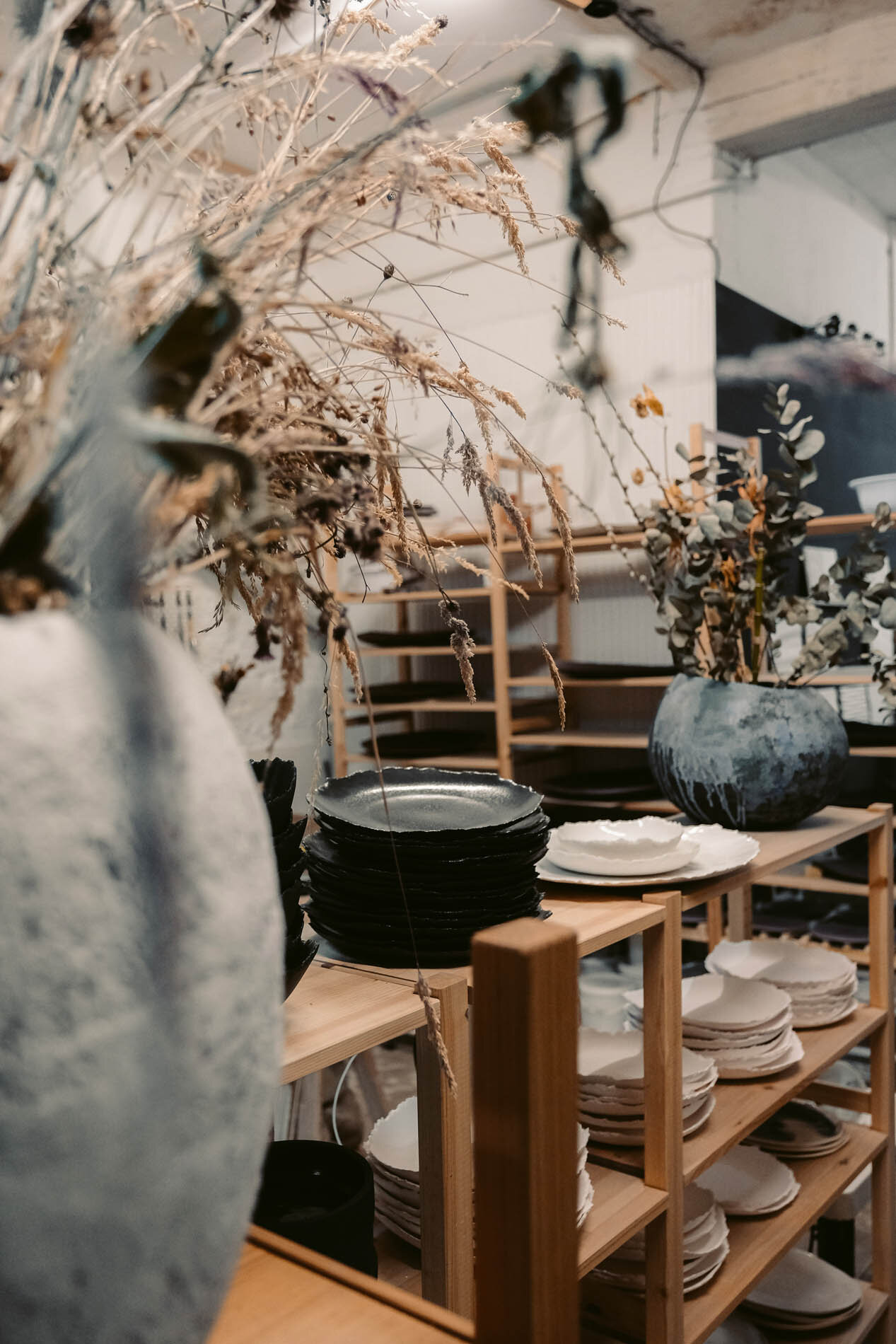
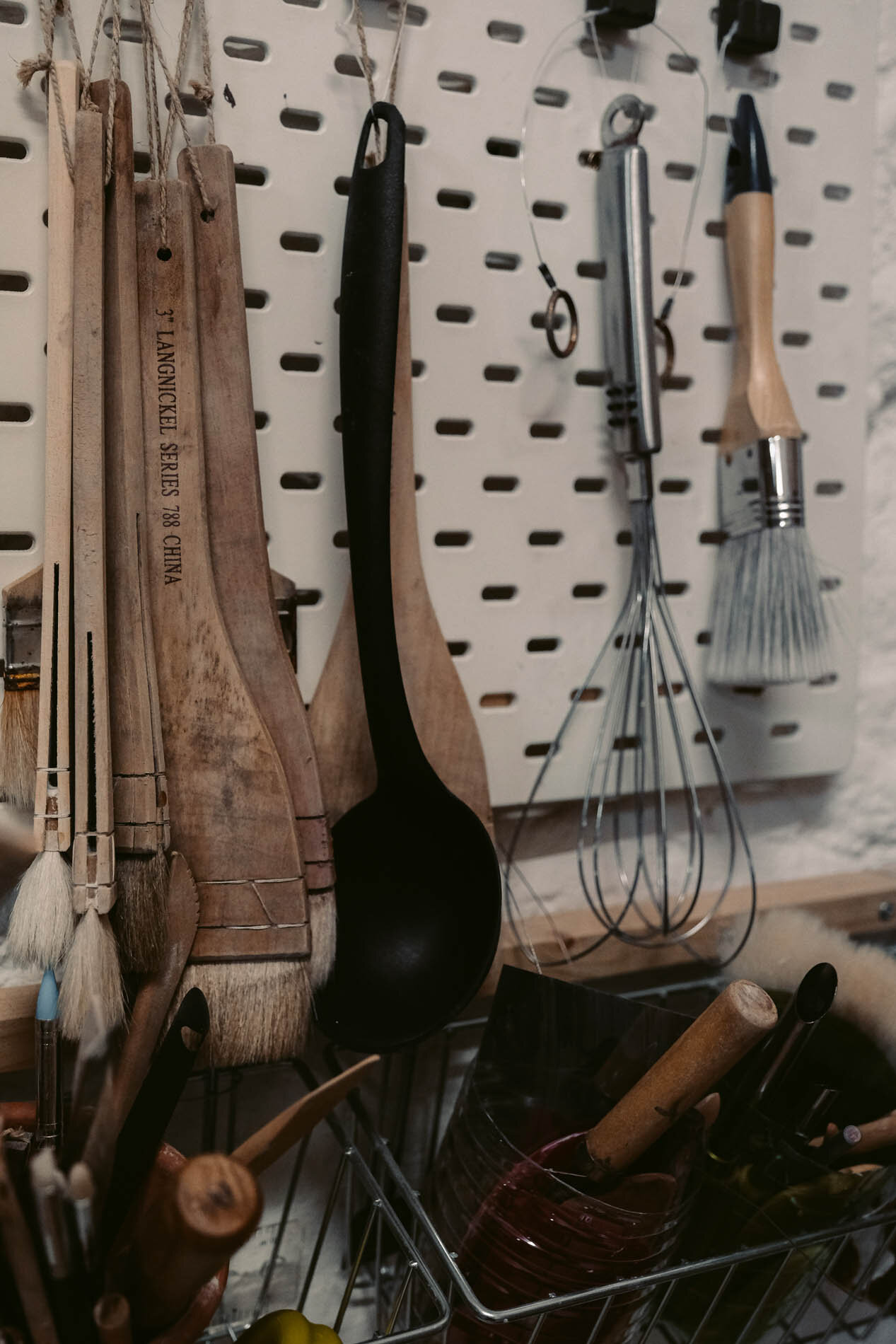
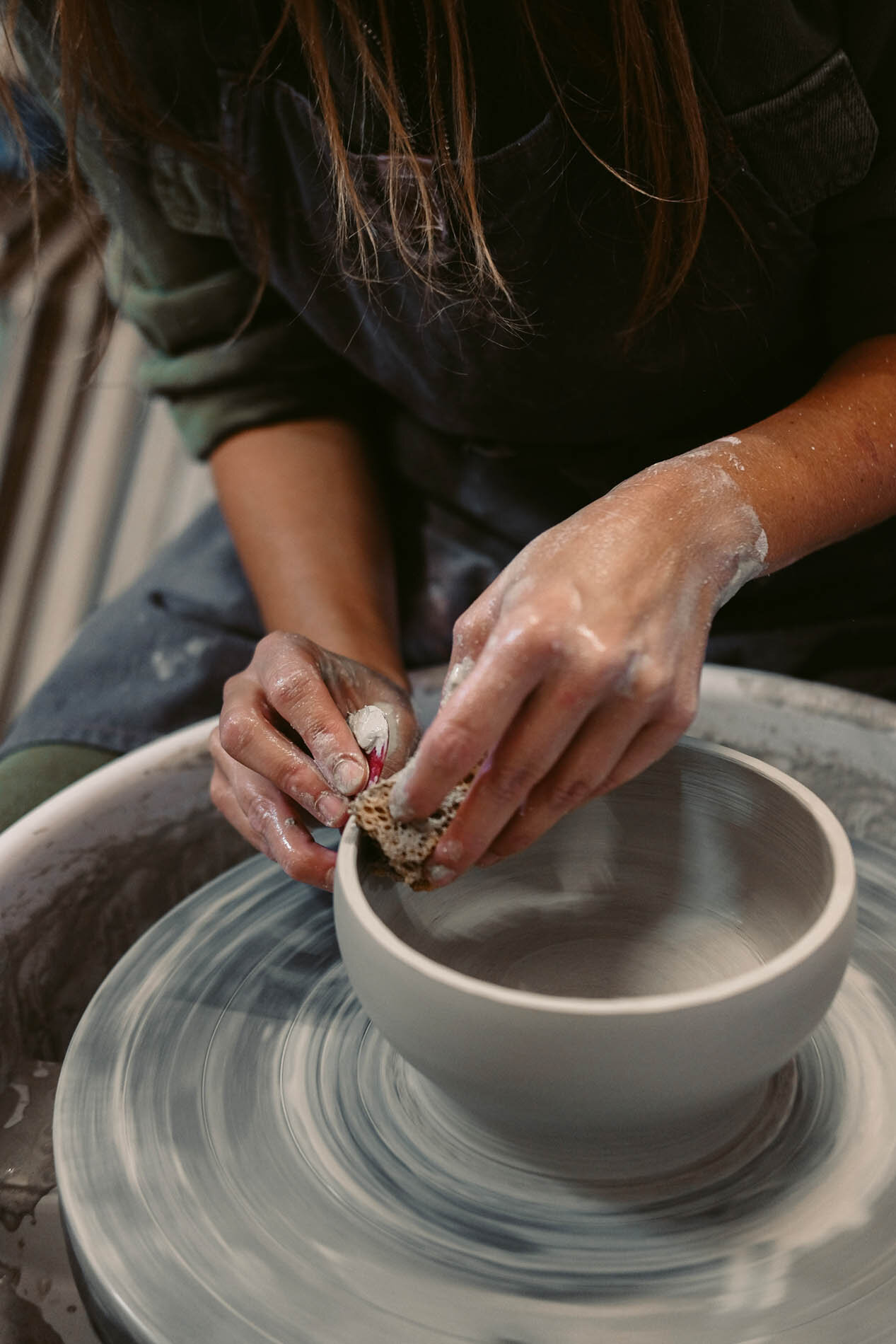
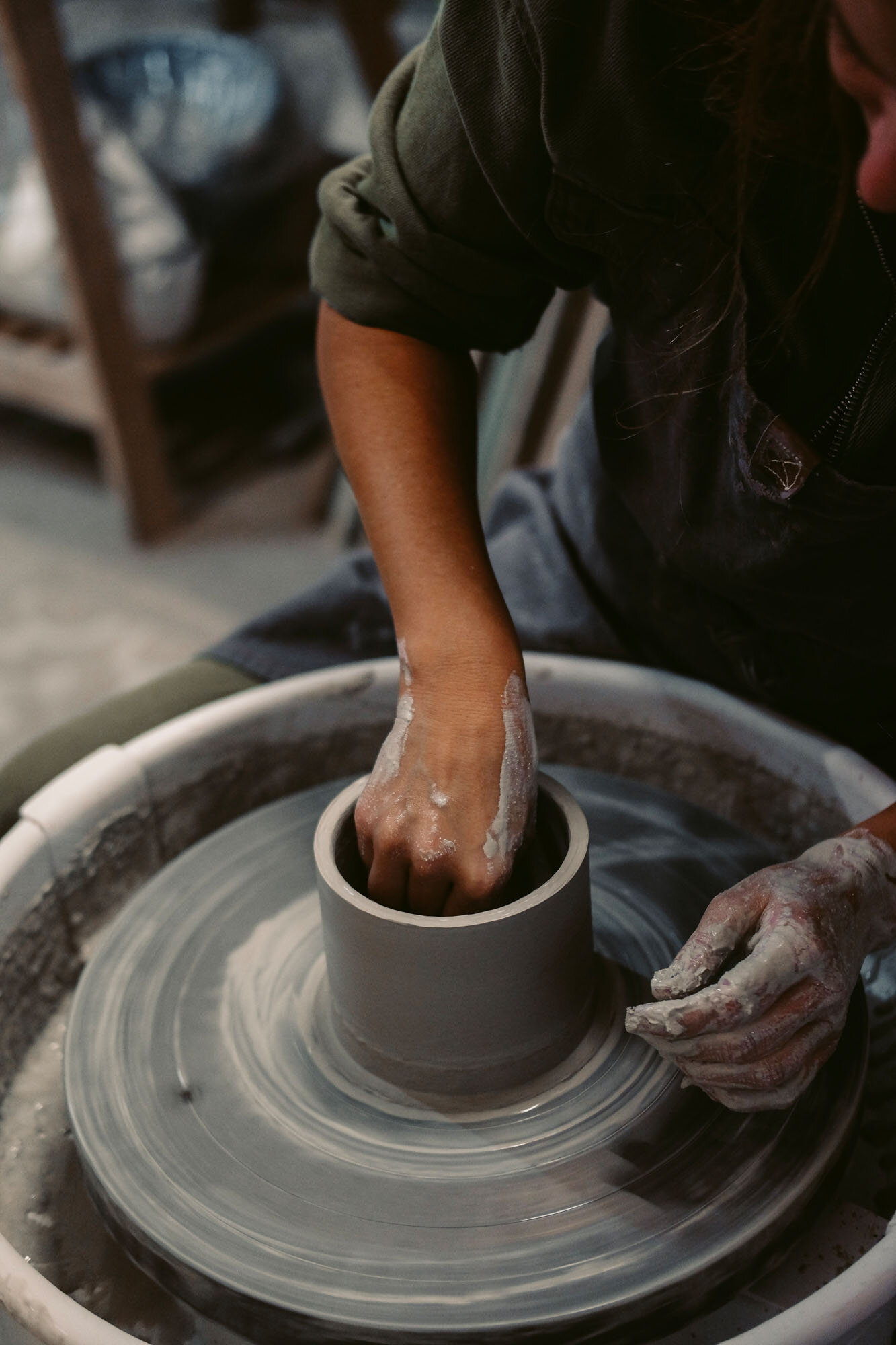
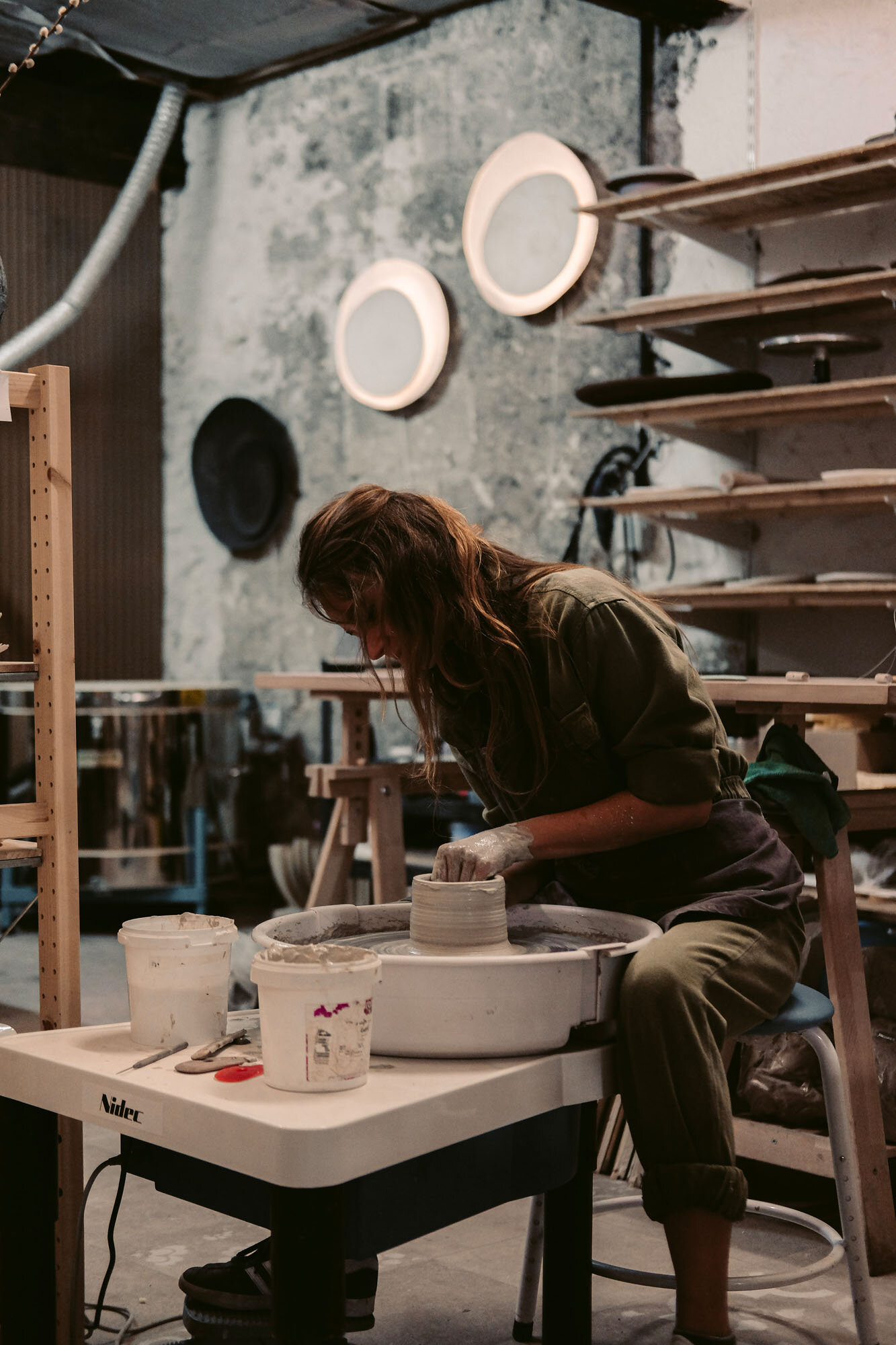

STUDIO
My ceramic workshop is located in Bordeaux, France. It is dedicated to my ceramic practice.
To make my line of dinnerware and sculptures, I use various traditional building techniques; such as the potter's wheel, slab and coil building.
I only use high-temperature clays such as stoneware and porcelain. These clays are fired between 1230°c and 1300°c to reach their maturity and vitrify. The practice of ceramics requires patience: you have to learn to respect the material and the different stages of making process.
THE MAKING PROCESS
I usually start working on a piece with drawing conceptual sketches and notes that allow me to transcribe my ideas. In terms of form, colors and textures, I am very inspired by what surrounds me in nature, in art, and by what I feel (through music in particular). It is a way of express myself. Moreover, I consider the piece I make as the product of an artistic creation.
My sources of inspiration are varied. I nourish myself from the beauty found in nature (materials, textures), the light, the colors and the work of artists, craftsmen, designers and architects.
A ceramic piece is the result of a making process that includes several steps. Firstly, the raw clay is shaped using one or a combination of different building methods (potter's wheel, coil building or slab building..) to give it the desired form. After a first controlled drying time, the piece, called “leather hard”, can be sculpted: I use tools to remove clay in order to give to piece its final shape. Then, we proceed to a second drying (2 to 3 weeks according to its size) and the piece becomes completely dry. We can proceed to the first firing called “bisque firing” at 980°c for 9 hours. Once it's fired, the piece becomes porous, which allows the glaze to be applied. The glaze is a finish layer (made of glass) which gives the piece a greater durability and waterproofness, especially for functional pieces such as dinnerware. The glaze can be applied by brushing, dipping or spraying depending on the desired result. Once the glaze is dry, the piece is finally fired at high temperature (between 1240°c and 1300°c) for an other 9 hours. This firing allows the clay to reach its maturity and to vitrify in order to become more durable.
Photo credit © Ergot Studio

